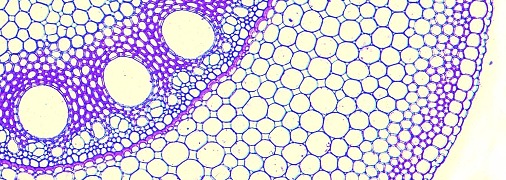Owen Atkin1,2, Vaughan Hurry3 and Peter Gorsuch1
1Research School of Biology, Australian National University; 2ARC Centre of Excellence in Plant Energy Biology, Australian National University; 3Umeâ Plant Science Centre, Umeâ University, Sweden
Over 95% of the Earth’s surface experiences low temperatures below 5oC each year. Exposure to cold slows critical metabolic processes of biosynthesis and cellular maintenance, with low temperatures being important in determining the growth, productivity and distribution of plants. Most plants are capable of rapidly responding to cold. These responses can be fast acting, with rapid metabolic changes in existing tissues. The responses can also be longer-term, resulting from the accumulation of information by the plant over days or weeks, leading to developmental changes such as promotion of flowering, breaking of bud dormancy and formation of new leaves that are thicker and display less leaf area per unit leaf mass than their warm-grown counterparts. Biomass allocation is also sensitive to sustained cold, with long-term exposure to cold resulting in plants exhibiting reduced investment in shoots. These diverse responses to temperature demonstrate that a wide range of processes in plants, leading to diverse changes in whole plant metabolism and wide-ranging changes in gene expression and proteome composition, are controlled by thermal perception.
In following sections, responses of plants to low, non-freezing temperatures are discussed, with the focus being placed on how plants sense and respond to cold. Emphasis is placed on the mechanisms underpinning cold acclimation, defined as modifications of anatomy, physiology and metabolism in response to below optimum temperatures, which minimise irreversible freeze-damage and improves the fitness of the plant. Cold acclimation often results in plants exhibiting greater metabolic capacities than their warm-grown counterparts; as a result, in situ rates of metabolism can be similar in plants experiencing contrasting growth temperatures, when measured at their respective growth temperatures. Importantly, we focus on the recent advances in our understanding of how cold-tolerant plants acclimate to low, non-freezing temperatures. Section 4 of this chapter summarises past work on chilling-sensitive plants (e.g. plants native to tropical and subtropical climates); such plants experience chilling stress at higher temperatures than cold-tolerant species, and while they may be capable of acclimating to low-moderate temperatures, they are rarely capable of developing freezing tolerance.
